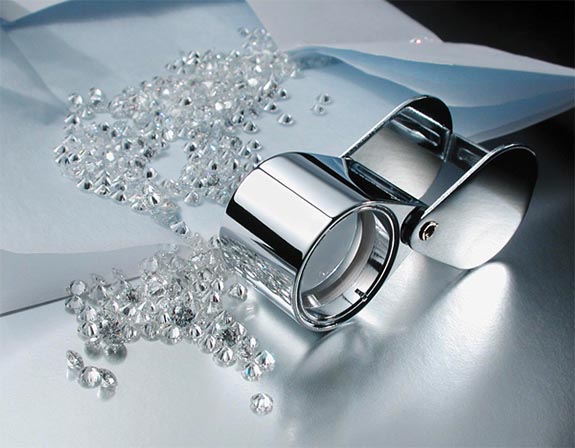August 12th, 2021
As the hardest material known to man, diamond is often used in tools to cut glass. But, research scientists at China's Yanshan University have developed a new type of glass that can actually scratch a diamond.

This new high-tech glass — tentatively named AM-III — rated 113 gigapascals (GPa) in the Vickers hardness test, compared to natural diamonds, which typically score in the 70-to-100 GPa range.
So, how hard is this new material exactly? Researchers say it is 10 times harder than steel and 20 to 100 times tougher than most bulletproof windows.
The researchers were also clear to point out that the new material — while amazingly hard — is not terribly attractive. The yellowish material is not suitable for jewelry applications.
It does have excellent semiconductor qualities, however, so it will likely show up in photovoltaic applications, solar panels and electronics, as well as bulletproof glass and protective phone cases. The material is not yet transparent enough to be used as phone screens.
As described in the journal National Science Review, the researchers started off with a material called fullerene, which is rich in carbon atoms. They subjected the material to 25 GPa of pressure and 1,200 degrees Celsius (2,192 degrees Fahrenheit). Normally, carbon exposed to that type of pressure and heat may have transformed into a diamond. But, the scientists were careful to reach those conditions gradually over the course of 12 hours. They also allowed the material to cool for another 12 hours.
Instead of the carbon organizing itself in an orderly crystal lattice (producing a diamond), the new material became a chaotic mix of crystal and amorphous structures (super-strong glass).
“Comprehensive mechanical tests demonstrate that the synthesized AM-III carbon is the hardest and strongest amorphous material known so far, which can scratch diamond crystal and approach its strength," noted the authors of the study. "The produced AM carbon materials combine outstanding mechanical and electronic properties, and may potentially be used in photovoltaic applications that require ultrahigh strength and wear resistance.”
Credit: Diamond image by Gemsparkdiamonds, CC BY-SA 4.0, via Wikimedia Commons.

This new high-tech glass — tentatively named AM-III — rated 113 gigapascals (GPa) in the Vickers hardness test, compared to natural diamonds, which typically score in the 70-to-100 GPa range.
So, how hard is this new material exactly? Researchers say it is 10 times harder than steel and 20 to 100 times tougher than most bulletproof windows.
The researchers were also clear to point out that the new material — while amazingly hard — is not terribly attractive. The yellowish material is not suitable for jewelry applications.
It does have excellent semiconductor qualities, however, so it will likely show up in photovoltaic applications, solar panels and electronics, as well as bulletproof glass and protective phone cases. The material is not yet transparent enough to be used as phone screens.
As described in the journal National Science Review, the researchers started off with a material called fullerene, which is rich in carbon atoms. They subjected the material to 25 GPa of pressure and 1,200 degrees Celsius (2,192 degrees Fahrenheit). Normally, carbon exposed to that type of pressure and heat may have transformed into a diamond. But, the scientists were careful to reach those conditions gradually over the course of 12 hours. They also allowed the material to cool for another 12 hours.
Instead of the carbon organizing itself in an orderly crystal lattice (producing a diamond), the new material became a chaotic mix of crystal and amorphous structures (super-strong glass).
“Comprehensive mechanical tests demonstrate that the synthesized AM-III carbon is the hardest and strongest amorphous material known so far, which can scratch diamond crystal and approach its strength," noted the authors of the study. "The produced AM carbon materials combine outstanding mechanical and electronic properties, and may potentially be used in photovoltaic applications that require ultrahigh strength and wear resistance.”
Credit: Diamond image by Gemsparkdiamonds, CC BY-SA 4.0, via Wikimedia Commons.


